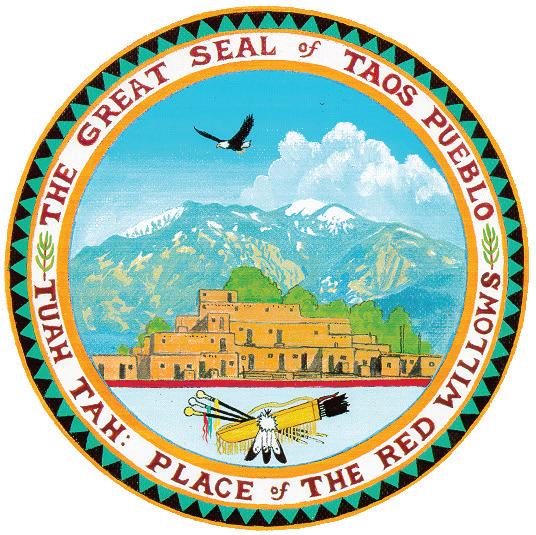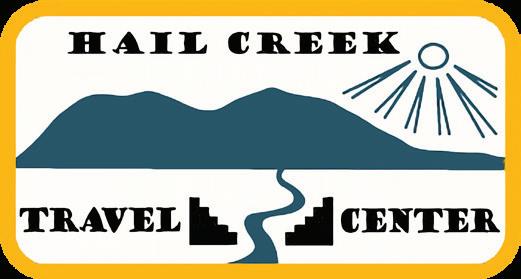ARTES

l l the luminous photographs of


l l the luminous photographs of
4 Martha Reed
Miller-Goins

IN THE STORY “HOW A BROKEN WAGON WHEEL CHANGED THE COURSE OF ART HISTORY,” from Classic Chicago Magazine Lenore MacDonald describes how a broken wagon wheel in the fall of 1898 “on a deserted, spectacular stretch of the Sangre de Cristo Mountains, just north of Taos” gave East Coast artists Ernest Blumenschein and Bert Phillips their “Eureka” moment. “They had found exactly what they were looking for: that incredible light, an endless horizon with its blue skies, captivating clouds, stunning sunsets, the majestic, mysterious mountains, the rolling, frolicking Rio Grande, and picturesque Native and Hispanic cultures.”
This community’s draw for artists, renown and struggling, is well-documented. It’s important to note, however, that Taoseños penchant for the arts extends beyond fine arts like painting and sculpture. When Ansel Adams visited Taos in the ’20s , he wrote to his future wife Virginia: “This is the most completely beautiful place I have ever seen. A marvelous snowy range of mountains rises from a spacious emerald plain and this little old-world village nestles close to the hills… and today, the heavens are filled with clouds.”
The artistry demonstrated by Elijah Rael, the photographer, featured on page 10 of this year’s Tradiciones: Artes issue, attests to the beauty Adams first documented. Similarly, Taos is home to Taos Onstage, a community theater group that performs at Wildflower Playhouse, which is also home to Ballet Taos and Revózo flamenco music. Read about upcoming plays and the group’s history on page 8.
Taos’ continued flair for fashion begins with “must have” Dineh fashions by Martha Reed who helped inspire famed Taos Pueblo fashion designer Patricia Michaels. Read about Reed and her Taos Legacy on page4.
Look for our salute to our Unsung Heroes, including Citizen of the Year, in next week’s special section.
Ellen Miller-Goins, Magazine Editor












BY ELLEN MILLER-GOINS


velvet outfits from ‘Martha of Taos.’”
— are familiar, even iconic, but designer Martha Reed was the inspiration for Roger’s style plus a host of ladies in Taos and beyond.
Rogers’ “constant quest for beauty in fashion, art, men — all the world around her — led her to Taos,” Cherie Burns wrote in “Searching for Beauty: The Life of Millicent Rogers, the American Heiress Who Taught the World About Style.” “She stepped into Martha Reed’s dress shop next to the Taos Inn and bought a few of the long, squaw-style skirts she admired. … She had an unerring eye for chic, even in this dusty outpost.” Once Rogers adopted her broomstick skirt, “it became part of her signature look. She seldom appeared wearing anything else.”
Soon, “the basic skirts Millicent bought in [Martha Reed’s] store were being copied and refined by Millicent’s designers back East,” Burns wrote, noting, Reed had admiringly said, “She lighted up a party because she looked so special.”
How did Martha Reed become so synonymous with the traditional Dineh fashion which she turned into a staple of any fashionista’s wardrobe?
Martha was born into art. In “Remarkable Women of Taos,” E. P. Walkiewicz wrote, “Her parents, Doel and Jane [née Elizabeth Jane Sparks], had met at the Art Academy of Cincinnati.” Martha was born there April 23, 1922. The family moved to Stillwater, Oklahoma, where her father established the art department at Oklahoma A&M College, now Oklahoma State University (OSU), and taught drawing, painting, printmaking and art appreciation. (Doel Reed served as head of that institution’s art department until he retired in 1959.)
Of Stillwater, Martha Reed recalled “I loved the fact that everybody knew everybody, and if you were a kid growing up there, they’d call you by name, you know.” Beginning in the 1940s the Reeds spent summers in Taos. In 1944 Martha received a Bachelor of Arts from Oklahoma A&M College. She worked in Tulsa, Oklahoma, and Dallas, then completed two years of graduate study in art at her alma mater. In 1953 Martha Reed made the fateful move to Taos. Although Elizabeth had studied art alongside Doel, her artistic pursuits seem to have ended. She did, however, teach Martha valuable lessons in design. Martha was working at the Pink Horse shop on the Taos Plaza when owner Al Thorwaldsen asked where she bought her clothes. In an interview with Tanya Finchum, Martha Reed noted: “I said, ‘Well, I design them or my mother designs them, and she makes them.’ And he said, ‘Would you make some for me, for the shop if I get a couple of seamstresses to make them here?’ So that’s how I got into the dress business.”
Reed designed broomstick skirts, blouses, and Navajo shirts for Thorwaldsen, she went to work for a shop in the Kit Carson Museum building, then with John McCarthy she opened a Southwestern dress shop on McCarthy Plaza. In 1955, Martha rented a space, bought some fabric from the Penney’s across the street
and opened the shop that would become known internationally as “Martha of Taos.”
Ed Walkiewicz, former director of the Doel Reed Center for the Arts and professor emeritus of English wrote, “During the 38 years she operated the shop next to the Taos Inn, her clients included many from the ranks of the rich and famous, including the Wurlitzer Family, Mabel Dodge Luhan, Dorothy Brett, Lord and
Lady Escher, Greer Garson, the Duke and Duchess of Albuquerque, Ann Miller, Clu Gulager, Jeanne Kennedy Smith, and President and Mrs. Jimmy Carter. She and her staff designed and constructed the garments worn by Dennis Hopper and Daria Halprin at their 1972 wedding, something Time Magazine saw fit to report.
In the 1970s, docents at Taos’s Millicent Rogers Museum were routinely clad in
A typical fiesta or broomstick skirt — sometimes referred to in derogatory language as a squaw skirt — sometimes contained 14 yards of fabric, pleated by hand when wet. “I always told my customers never to wash their skirts. They’d ruin them!” Martha Reed said in an article by fellow Taos fashionista Zandi Richardson. “Send them back to me to wash and repeat. And send the skirts back to be shortened. Don’t just cut off the bottom!”
In the story, Reed, age 87 at the time, showed Richardson the mathematical formula of the skirts: “the bottom tier of fine pleats consists of eight yards; the
CONTINUES
[Millicent Rogers] stepped into Martha Reed’s dress shop next to the Taos Inn and bought a few of the long, squawstyle skirts she admired. She had an unerring eye for chic, even in this dusty outpost. [Once Rogers adopted her broomstick skirt] it became part of her signature look. She seldom appeared wearing anything else.
Cherie Burns Author


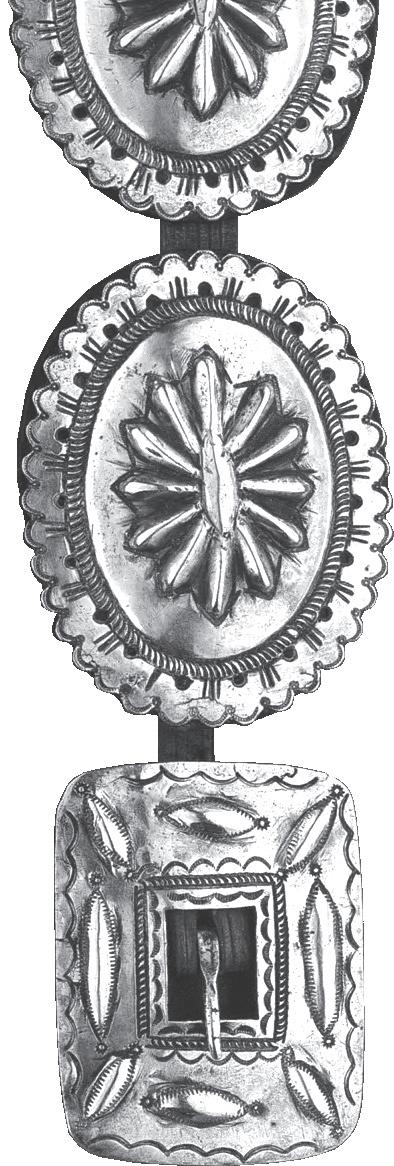
CONTINUED FROM 5
middle layer has fewer, softer pleats in four yards of fabric; the top layer is minimally pleated and only 2 yards at the waist. This makes it much more flattering and less bulky.”
Famed Taos Pueblo fashion designer Patricia Michaels shared “when she returned from college, she went to Martha Reed to buy an outfit only to have the older woman encourage her to create her own designs. Martha had watched Patricia from childhood and knew that she would ‘take to fashion,’” Elizabeth Cunningham wrote in “Remarkable Women of Taos.”
Multiple sources described Martha Reed’s love for “soirees with hooch.”
She had several affairs but never married because she said she would never find a man as good as her father.
Walkiewicz wrote about meeting Martha Reed who, “at 88 was still stunningly beautiful. … By that point in her life, the woman who loved to travel was restricted to a wheelchair, a measure made necessary, she later informed
us, by a tumor of the inner ear that affected her sense of balance.”
Andrew Gulliford wrote when “the original adobe homes suffered benign neglect” following Doel Reed’s death, Martha offered to give OSU the property. “At first university administrators did not know if they could own and manage out-of-state property. But faculty, staff, and donors rose to the occasion including financial support of Martha, impoverished in her later years, and care for her 27 cats.
“There was much to do — stabilize the property, see to Martha’s health, and begin major fundraising efforts.” Now the Doel Reed Center is an unparalleled success for OSU with students arriving from mid-May through July, and leisure-learning classes held in July and September.
Martha Reed died in her Talpa home Dec. 28, 2010. In her Taos News obituary by Virginia Clark, Erión Simpson, thenexecutive director of Taos Art Museum, said, “Martha was a teacher till the end,
and enjoyed talking about the history of Taos, her father’s contribution to the art community and her wonderful experience at the Philbrook museum [in Tulsa].”
“She was such a diva,” longtime local photographer and writer Patty Traynor told Clark about her close friend. “She was the only real, true diva I’ve ever met.”Dennis Hopper and Daria Halprin at their 1972 wedding, something Time Magazine saw fit to report. In the 1970s, docents at Taos’s Millicent Rogers Museum were routinely clad in velvet outfits from ‘Martha of Taos.’”
A typical fiesta or broomstick skirt — sometimes referred to in derogatory language as a squaw skirt — sometimes contained 14 yards of fabric, pleated by hand when wet. “I always told my customers never to wash their skirts. They’d ruin them!”
Martha Reed said in an article by fellow Taos fashionista Zandi Richardson. “Send them back to me
to wash and repeat. And send the skirts back to be shortened. Don’t just cut off the bottom!”
In the story, Reed, age 87 at the time, showed Richardson the mathematical formula of the skirts: “the bottom tier of fine pleats consists of eight yards; the middle layer has fewer, softer pleats in four yards of fabric; the top layer is minimally pleated and only 2 yards at the waist. This makes it much more flattering and less bulky.”
Famed Taos Pueblo fashion designer Patricia Michaels shared “when she returned from college, she went to Martha Reed to buy an outfit only to have the older woman encourage her to create her own designs. Martha had watched Patricia from childhood and knew that she would ‘take to fashion,’” Elizabeth Cunningham wrote in “Remarkable Women of Taos.”

Multiple sources described Martha Reed’s love for “soirees with hooch.” She had several affairs but never married because she said she would never find a man as good as her father.
Walkiewicz wrote about meeting Martha Reed who, “at 88 was still stunningly beautiful. … By that point in her life, the woman who loved to travel was restricted to a wheelchair, a measure made necessary, she later informed us, by a tumor of the inner ear that affected her sense of balance.”
Andrew Gulliford wrote when “the original adobe homes suffered benign neglect” following Doel Reed’s death, Martha offered to give OSU the property. “At first university administrators did not know if they could own and manage out-of-state property. But faculty, staff, and donors rose to the occasion including financial support of Martha, impoverished in her later years, and care for her 27 cats.
“There was much to do — stabilize the property, see to Martha’s health, and begin major fundraising efforts.” Now the Doel Reed Center is an unparalleled success for OSU with students arriving from mid-May through July, and leisure-learning classes held in July and September.
Martha Reed died in her Talpa home Dec. 28, 2010. In her Taos News obituary by Virginia Clark, Erión Simpson, thenexecutive director of Taos Art Museum, said, “Martha was a teacher till the end, and enjoyed talking about the history of Taos, her father’s contribution to the art community and her wonderful experience at the Philbrook museum [in Tulsa].”
“She was such a diva,” longtime local photographer and writer Patty Traynor told Clark about her close friend. “She was the only real, true diva I’ve ever met.” l
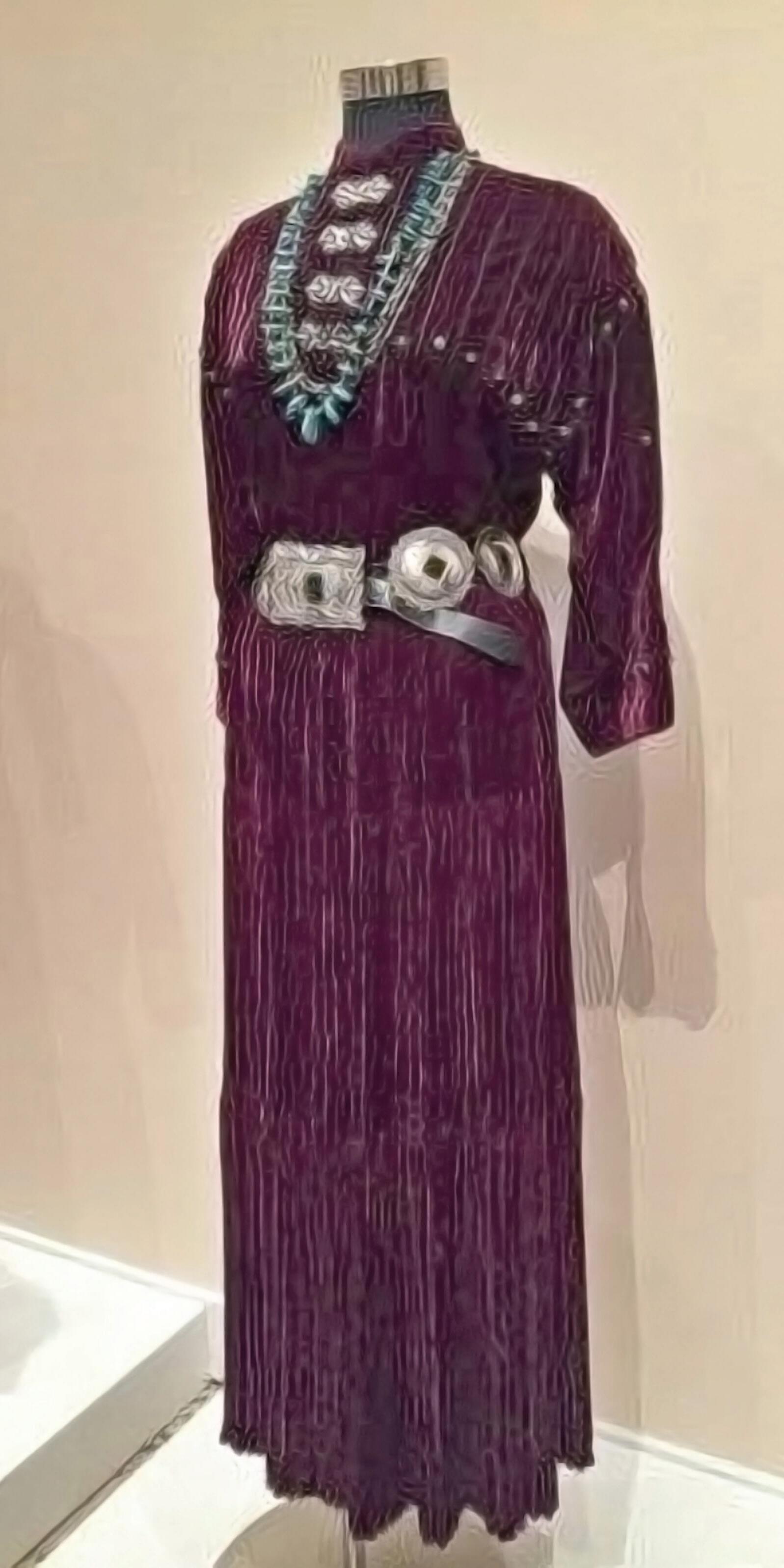
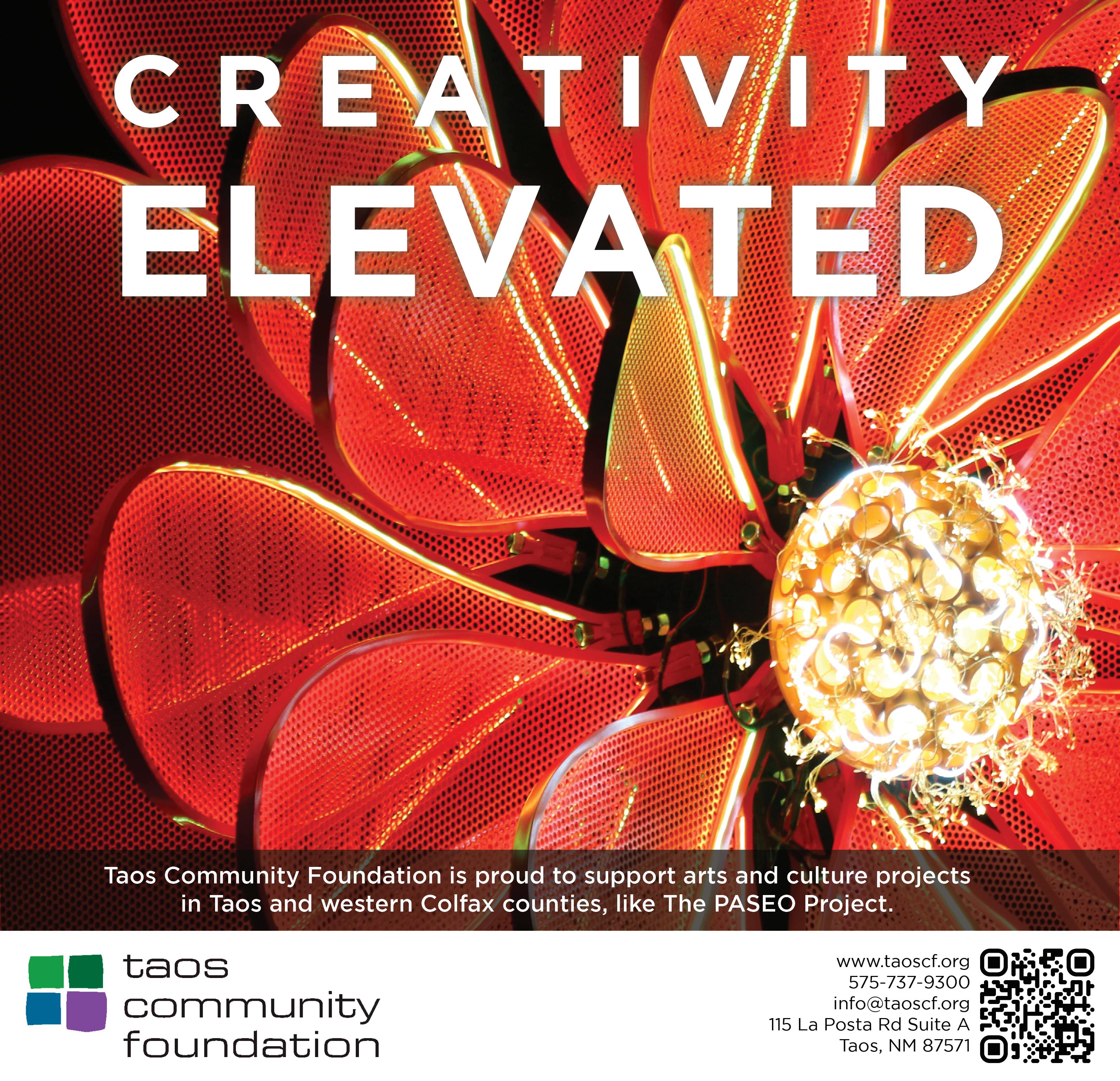
BY ELLEN MILLER-GOINS
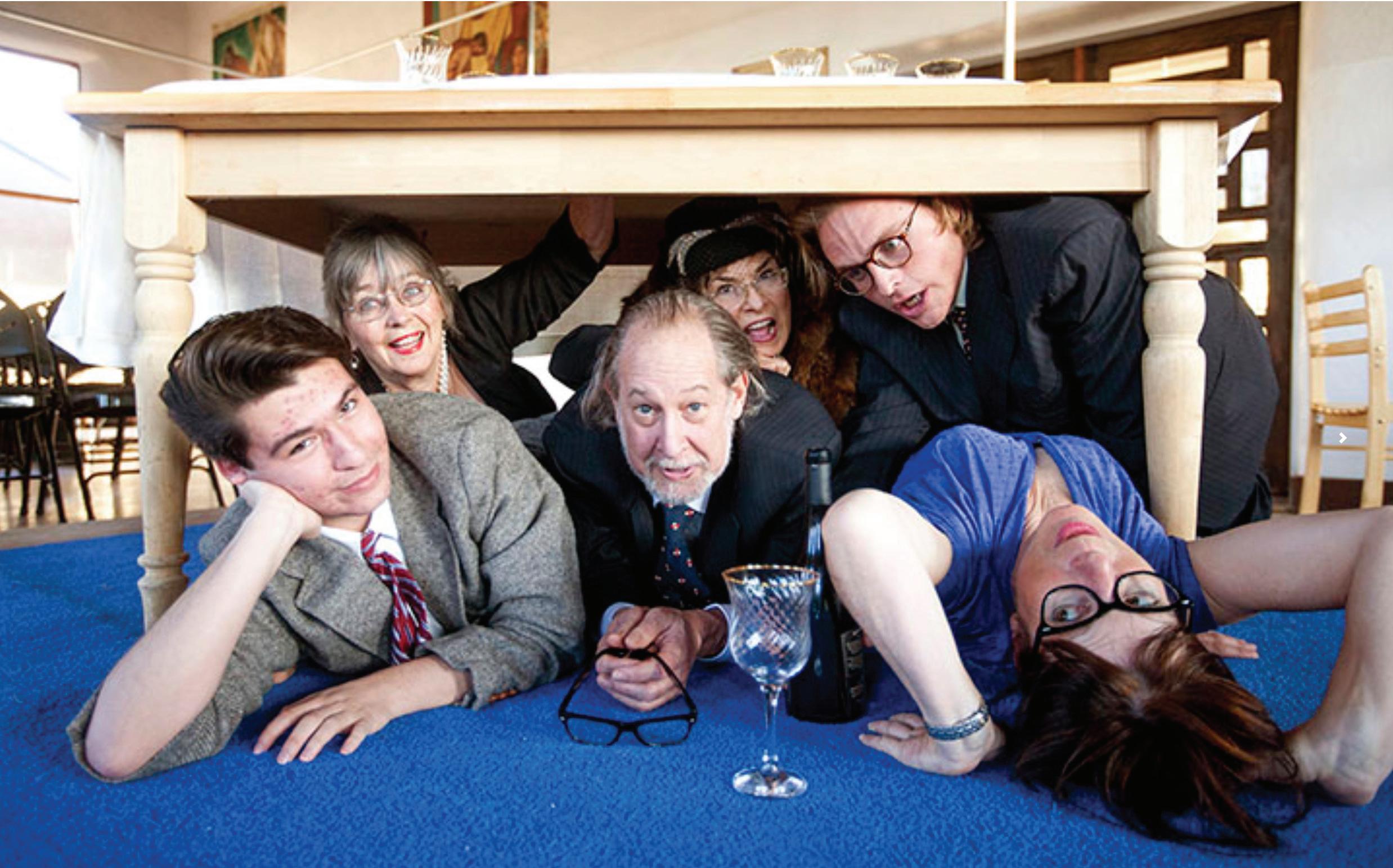
IN A WORLD WHERE ARTIFICIAL INTELLIGENCE LOOMS LIKE A LARGE, PLAGIARISTIC THREAT, one thing is certain: Live theater is 100 percent real. It does not benefit from green screens, CGI effects or take after take — all, ostensibly, to create a “perfect” product. Live theater is risky. It’s immediate. It’s intimate. And it’s fun.
According to Charlotte Keefe, co-founder of Taos Onstage, it’s an art form like no other, and it is this passion that spurred Keefe, Dianne Davis and Susan Lewis to form this community theater group in 2013. “This is our 12th season,” Keefe says. “I’ve been told we’re the longest surviving community theater in Taos. There were some other theater groups here, but we wanted to do consistent theater, and we have a lot of very talented people here.”
Keefe, a retired professor of special education, has acted in community theater for decades. “I had started a community theatre in Texas, so I knew how to start one, but I was sort of reluctant
at first — ‘Oh, do I want to do this again?’”
“It’s a Wonderful Life: A Live Radio Play” debuted as a dinner show at Taos Mesa Brewing and quickly became a holiday tradition.
“It went over really well,” Keefe says.
“And I said: If we’re going to do this, we have to say, ‘this is what we’re going to do’ in advance, so that we don’t chicken out and not do it.”
Productions followed a nomadic course, as the group performed in the Mural Room at the Old Taos County Courthouse on the Taos Plaza, Metta Theatre, and the Hopi Dining Room at Kachina Lodge. Finally, according to their website, “in 2018 the group decided to take a leap of
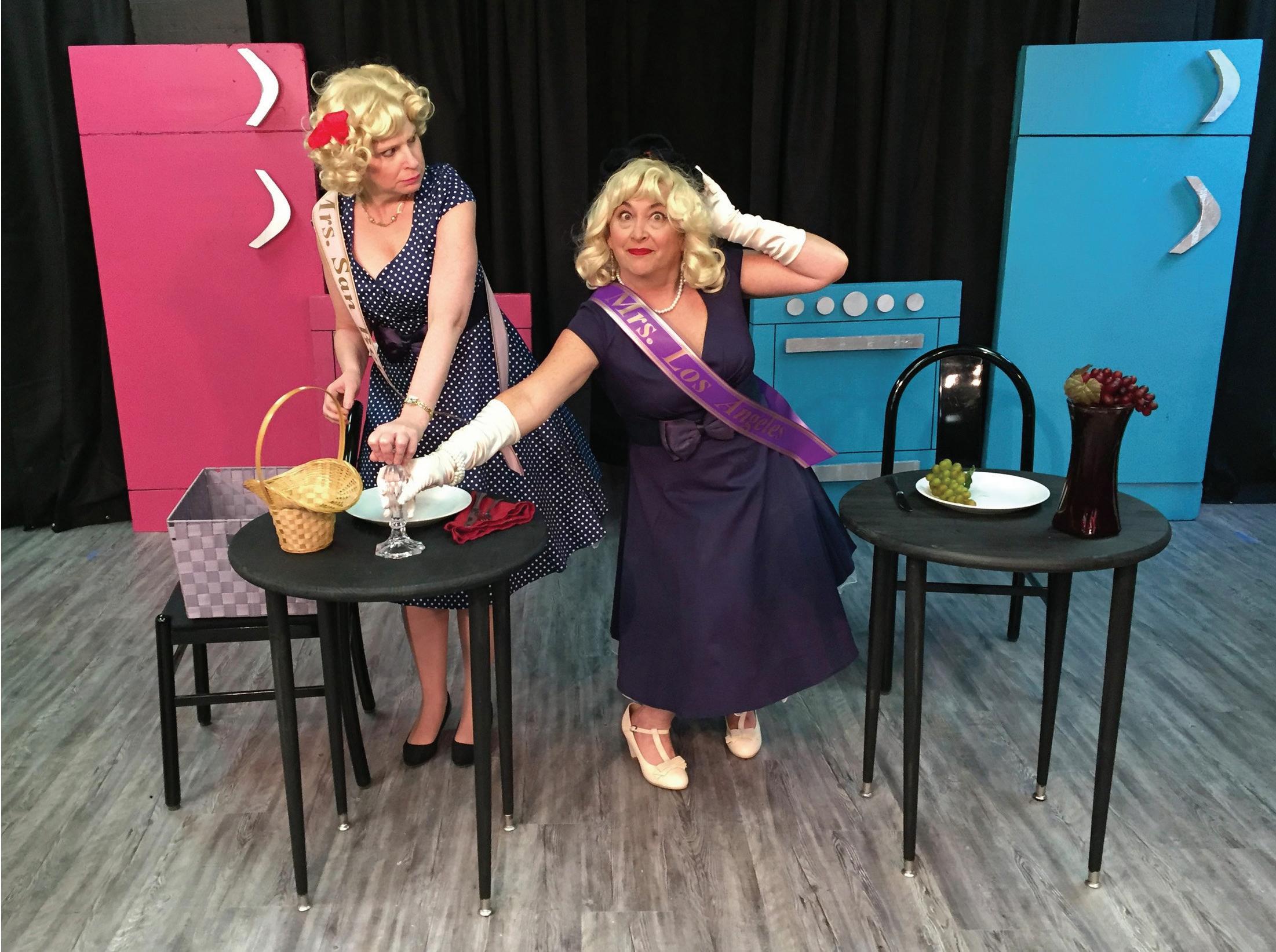
faith — and a significant financial risk — by renting part of Cantu Plaza as its new home.”
Says Keefe, “It’s a cannabis shop now. We shut that down during COVID and we did virtual plays. Then Jim Avery wanted us to do our productions at his playhouse, the Wildflower, so when he opened, we were the first production. We’re not the only ones who perform there. They have a lot of different things in there.”
Jim and Lyn Avery founded the 80-seat theater for the performing arts. Ballet Taos, Revózo (flamenco music featuring Vicente Griego), Taos Onstage, and many, many more performing arts individuals and groups call the space home. Additionally, the Wildflower Playhouse Gallery features seasonal artist collections from Taos and all over.
At this writing Rich Greywolf, director of Taos Integrated School of the Arts, a charter K-8 school in Taos, was holding auditions for “Wonder of the World” a play he is directing for Taos Onstage to run Oct. 17–27. “We have rotating directors,” Keefe explains.
Taos Onstage’s board chooses plays. “We do a lot of reading. Sometimes a director might say, ‘I would like to direct this play.’
And if everybody on the board says, ‘Yeah, that’s a good play,’ that’s even better,” Keefe says. “We’re open to people’s suggestions, but we read it to see if we think the audience would respond to it, and also, can we cast it? That’s always a big question. It’s a volunteer group. Nobody gets paid, a lot of people work many jobs, and, typically, it’s more difficult to get men. We’ve had a few all women plays, but we don’t want it to be always just women. Sometimes we have to go ‘beat the bushes.’ We never know who’s going to show up at auditions.”
I’ve been told we’re the longest surviving community theater in Taos. There were some other theater groups here, but we wanted to do consistent theater, and we have a lot of very talented people here.
Charlotte Keefe Taos Onstage co-founder
Keefe says the plays are generally targeted to grown-ups. “Our plays are really more adult plays for adult actors. We’ve had plays that I thought might be controversial, but, you know, Taos is pretty open minded. Nobody’s ever
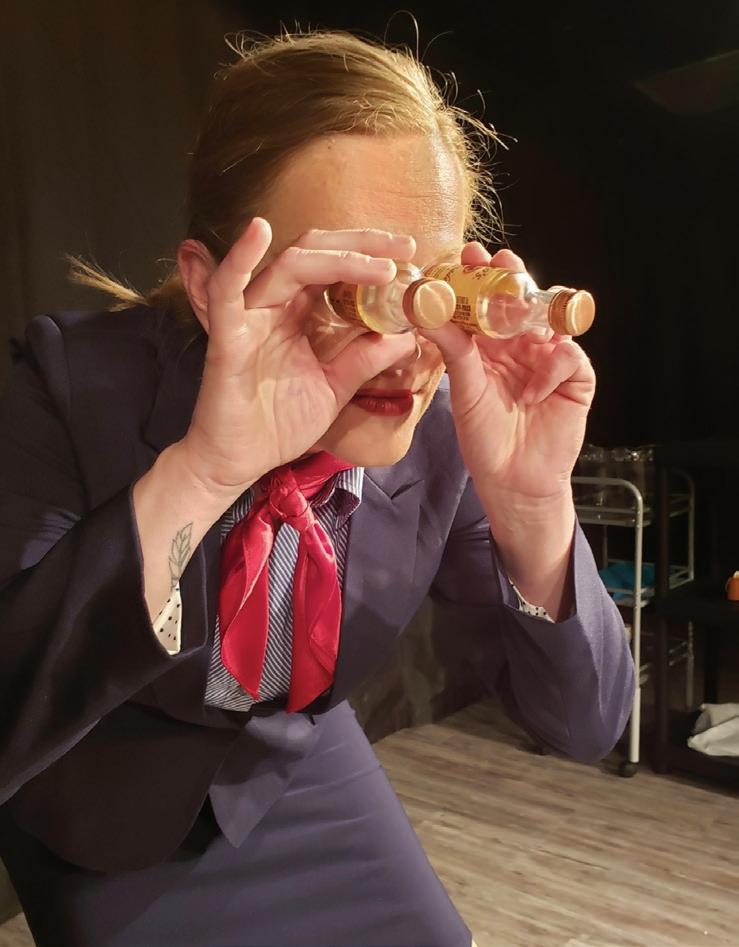
complained. Often, we do Pulitzer Prize-winning plays, or plays that have won a Tony Award or a drama award of some sort. I like to look at those because they’re well-written. One of our primary goals is to find plays that are well-written, but they are for adults. They’re not something you would take the kids to. These days, playwrights really spice the place up. Lots of adult language. We did do a play not long ago that had a lot of F-bombs in it, but we don’t want to do anything that’s controversial. We just try to have quality plays.
“I don’t know if most people know this, but we have to purchase a license agreement with the publishing company and, in that agreement, it says you cannot change anything in the play. They spent a lot of time writing it, and they chose their words, and that’s the way they want it.”
Works have included plays by Los Alamos playwright Robert Benjamin and a new play from the winner in their playwriting contest. The group aims for a mix of comedy and drama through the season.
“The winner of the first contest was ‘Welcome to Taos’ by Mike Morris, which we produced in 2022,” Keefe says. “The winner of the 2024 Don Keefe Memorial Playwriting contest is ‘Sex, Murder
and Applesauce’ by Jeffrey Marks and Mike Morris, which we will produce in June 2025. As part of our educational component, Taos Onstage also hosts a New Works Showcase where local playwrights can have a portion of plays they are working on read aloud by community members and receive feedback.”
Keefe herself penned the one-woman show “If a Door Opens: A Journey with Francis Perkins,” a tribute to Franklin D. Roosevelt’s Secretary of Labor, the first woman in U.S. history to be appointed to the presidential cabinet and an architect of New Deal programs.
“Part of our mission is to have an educational aspect, and that’s playwriting,” Keefe says. “We also try to use some plays that people aren’t that familiar with, and so it exposes them to new plays, instead of just doing the same old things. That’s part of the educational process as well.”
And they want to have fun. “Ever since we started with the live radio show, which we do as if it were in a 1940-ish radio station, we have done that every December. We have a foley artist who does the sound effects, and we put them up front so they’re like another character in the play. We have microphones, and our ‘call letters’ and ‘on air,’ and ‘applause’ lit-up signs ... Last year, the Wildflower hosted a dinner before the last performance of the holiday radio show and they will do that again this year.”
Every performance brings different forms of artistry to the fore, Keefe notes, from set design, to costumes, to lighting, to the actors’ and director’s interpretation. “One of the fun things is that every performance is different, because it’s live with a different audience, and they’re going to respond differently. Somebody might forget a line, but nobody stops. There’s always another actor that will come in and cover until you recover. A lot of times the audience doesn’t know.
“I just think there’s an engagement with the audience — sometimes they clap, and they laugh, you hear that live laughter. That’s just exciting!”
COURTESY PHOTOS

When we work together, we have the power to create positive change in our communities! That is exactly what our members do when they opt into Nusenda Credit Union’s Community Rewards program. They help us fund grants that support the arts, community services, education, environment and wildlife, and healthcare.
In 2023, the Nusenda Foundation granted more than $630,000 in Community Rewards to 108 organizations that are positively impacting the communities they serve! Our members and employees are committed to being positive contributors in the places we call home.
OPPOSITE
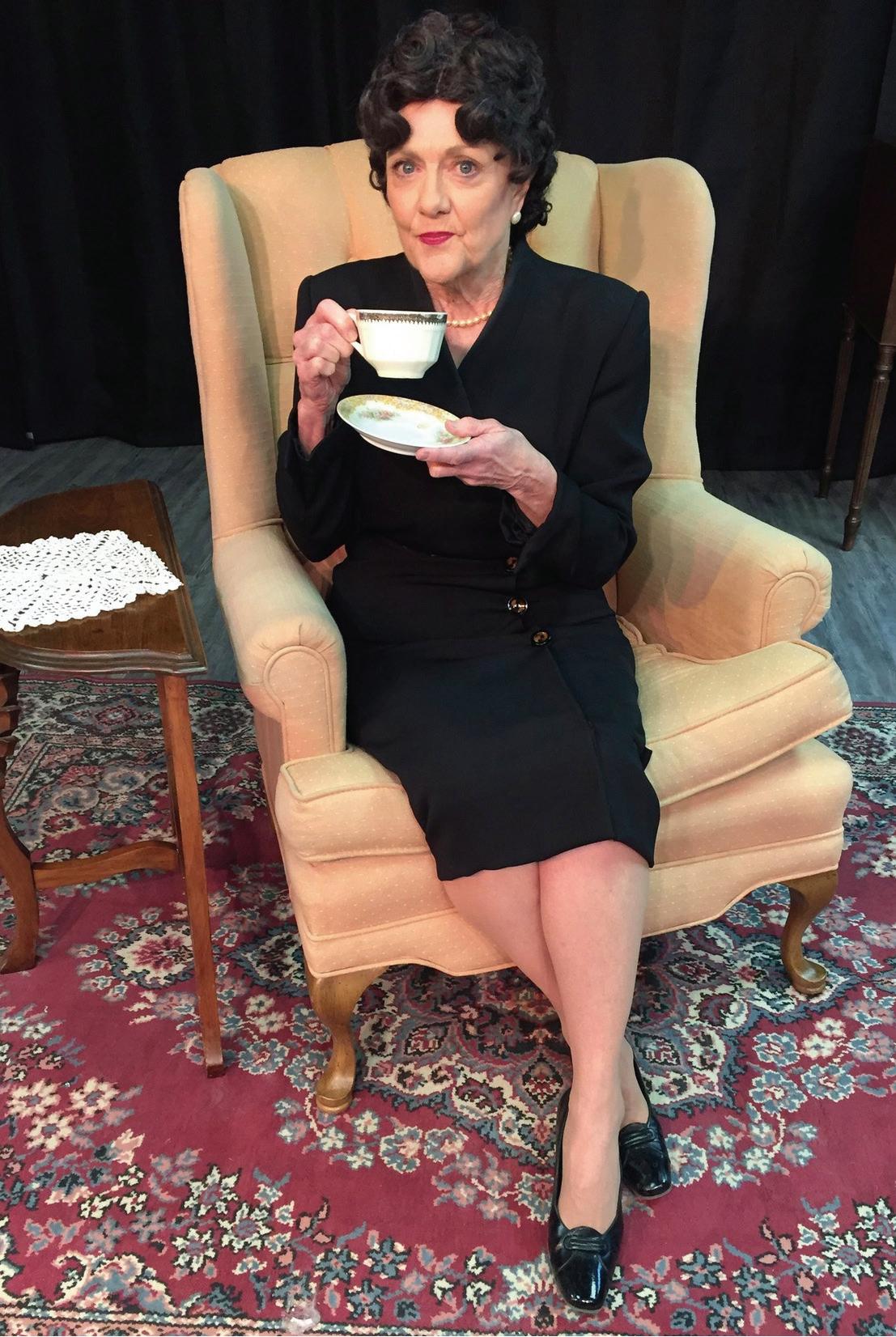

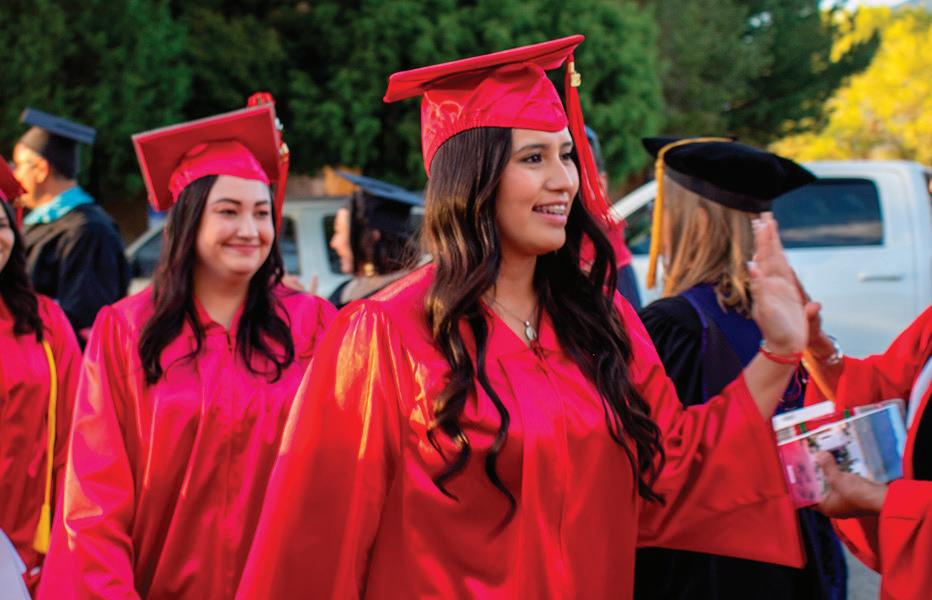
BY ELLEN MILLER-GOINS

PHOTOGRAPHER ELIJAH RAEL WAS RIDING HIGH A FEW YEARS BACK AS HE WATCHED NAME RECOGNITION GROW — DUE, IN NO SMALL PART, TO A CONCERTED EFFORT ON FACEBOOK, INSTAGRAM AND OTHER GUERILLA MARKETING PLATFORMS — ONLY TO HAVE IT ALL COME CRASHING DOWN.
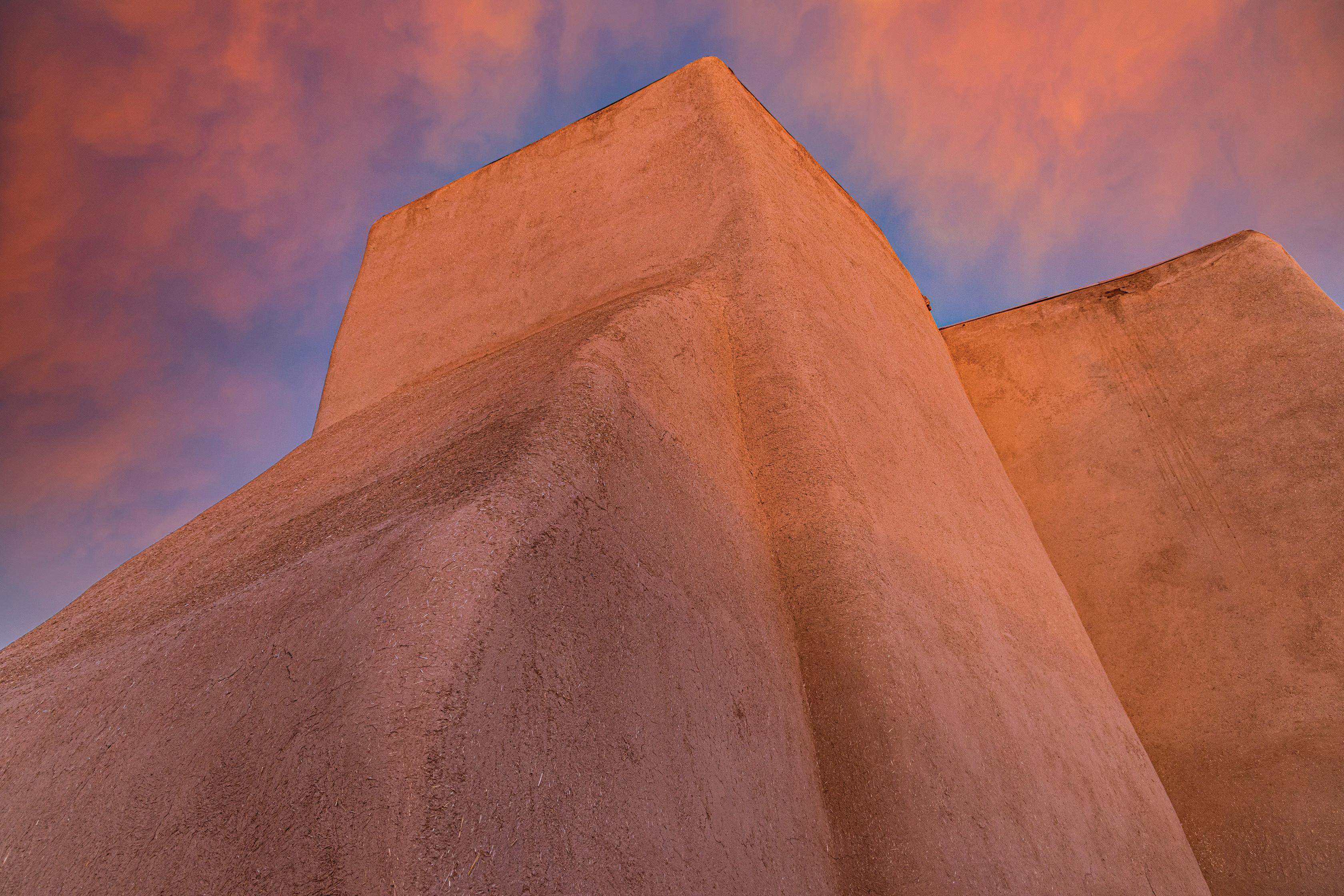

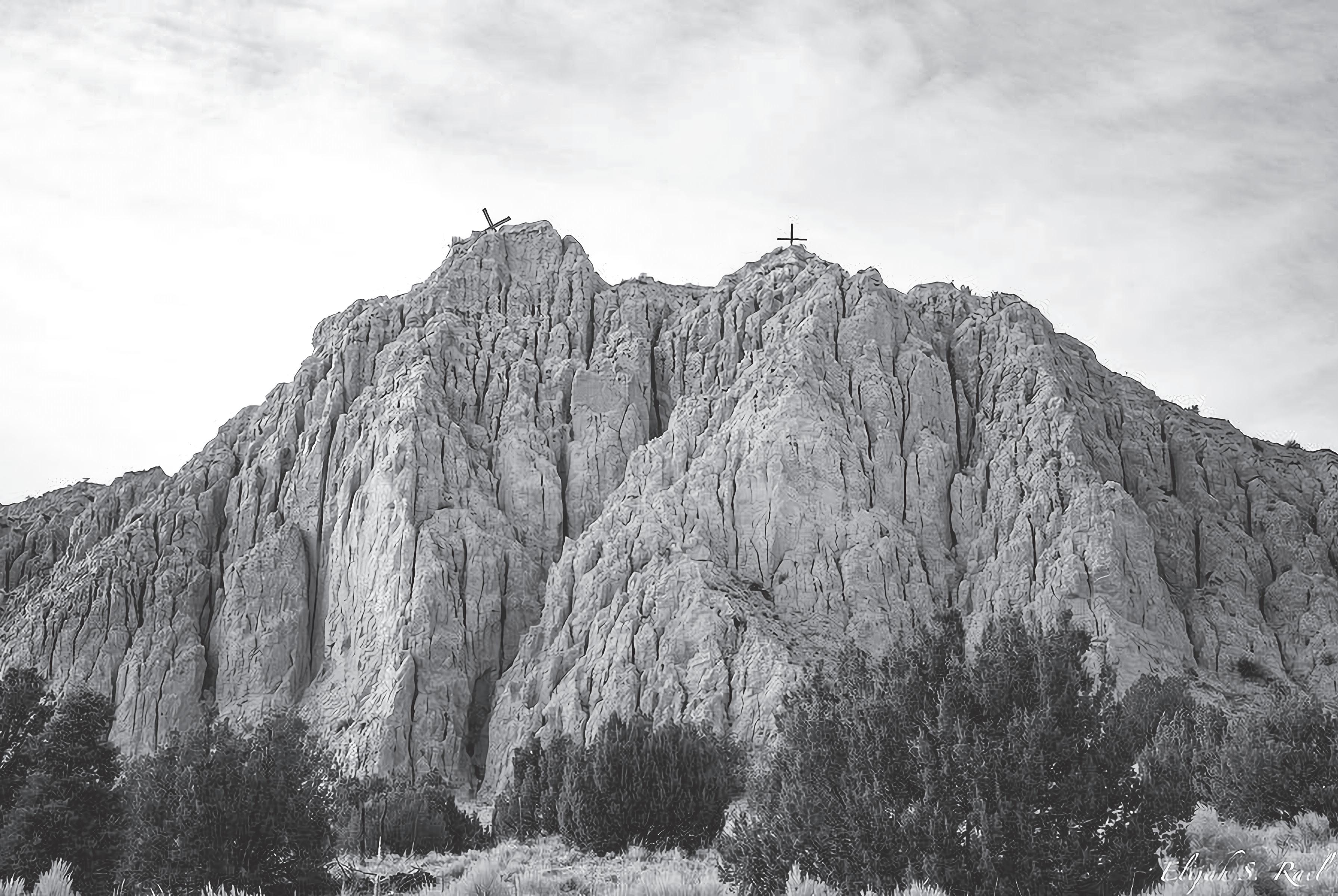
“My photography business was taking off in 2022 when I had an interview with KOAT and then my social media account got hacked through Facebook, so I lost all my friends, all my followers. And my Instagram account was tied in with my Facebook account, so then I lost my Instagram account. My business went downhill from there as far as clientele because I lost everybody. And you can’t just say, ‘Hey, here I am again. Facebook and its algorithms, it doesn’t work like that. It’s taken a year and a half, and now I’m back to being almost where I was before.”
No doubt Rael is as adept as anyone at sharing his stunning photographs and videos: On his own Facebook pages, on Instagram, on X (Twitter), on TikTok ... But for him marketing comes secondary to sharing his deep love for the Northern New Mexico landscape that has shaped his whole life. That is, in fact, the love of his life, secondary only to his life partner Angelica.
Rael, a self-taught photographer from Ranchos de Taos, credits Angelica and his late brother Joshua for inspiring his creativity — though further discussion reveals everyone in his family influenced his love for the natural world. He recalls spending time as a child in his grandfather Eloy Moses Rael’s orchards.
“I just always enjoyed nature, always looking at everything the way the flowers would turn into fruit. It was just something that always stuck with me.”
He recalls his mother Loretta Rael’s love for gardening and beautiful things. He recalls exploring the fields by Mt. Zion Tabernacle, the El Prado Pentecostal church founded by his grandfather Eloy. He recalls his other grandfather, Eleuto Maestas, handing him a Minolta camera and showing “the basics of it … where to get the line not to be overexposed.”
“I’m self-taught. Since I was in high school, I’ve always had a camera on my hands. I didn’t take classes or anything. I would say a lot of it was inspiration from my older brother, Josh,” who died Nov. 12, 2016.
“I watched a lot of YouTube videos,”
Rael continues. “When I got the basics of what photography is, then I was starting to dial into really understanding the depth of composition. It’s really figuring out composition and not trying to be a copycat.
Everybody’s got millions of shots of the St. Francis church. It’s the most photographed church in America. Undeterred — and, he would argue, uninfluenced by others in his field — Rael looks for ways to put his unique stamp on this famous New Mexican landmark, waiting for rain to create reflecting pools at the church’s base, for example. “When I saw where it was reflecting in the water, I liked that a lot because it was different. At that time, I was doing a lot of reflection shots, so when it rained, I was booking it over there. That was planned, but sometimes
I’ll go around the church and things just happen.”
Summer rains combined with late afternoon sun might inspire a quick trek out to the teepees at Taos Drum, another favorite subject to capture a hoped-for rainbow.
And then there’s the “Welcome Tree,” the wizened, lifeless tree that greets drivers as they emerge from the canyon southwest of Taos. “I probably have over 500 shots of that tree.”
Ask Rael to pick a favorite spot is a bit like asking a parent to pick a favorite child. “I love Ranchos, Arroyo Hondo, Arroyo Seco ... I’m just biased to Northern New Mexico. All of New Mexico is good. We live in such a beautiful place.”
He credits Angelica with keeping the inspiration alive
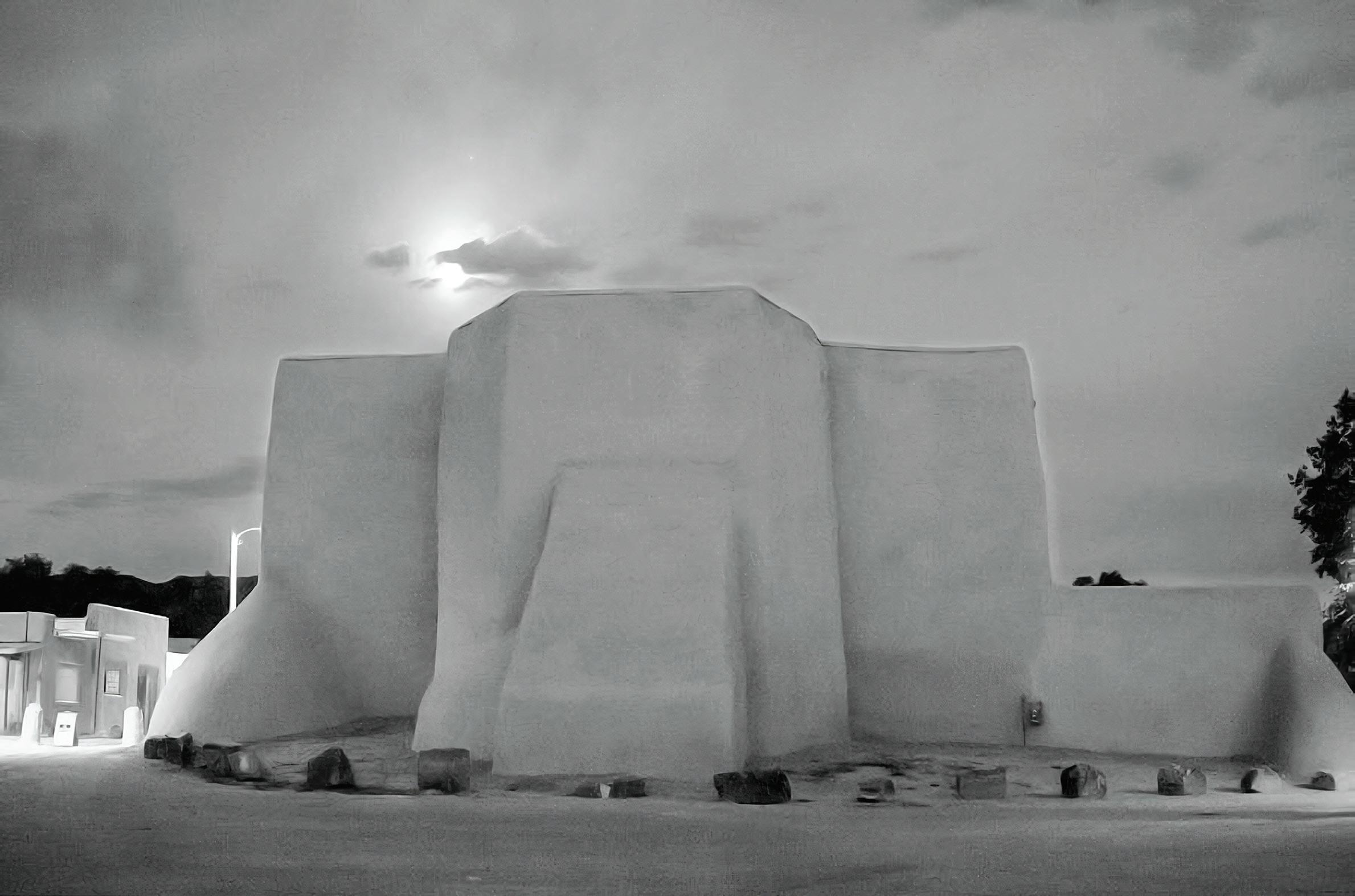

“We’ve been together since I was 13 years old. I have a photo of her holding the video camera at around 16, and I’m holding a camera. I like to joke around that it was an arranged marriage. We’ve
been through a lot together. We had one son — he’s 19 years old right now.
“She’s a dental hygienist, but on the side we like to do portrait photography. We do weddings and things, but my heart’s
mainly for landscape photography.”
Later in the conversation, Rael credits his family’s church and his relationship with God for cleaning up an alcohol habit that got out of hand. That and his photography. “When I’m out there doing photos, things just kind of wash away. I’m not thinking about bills, I’m not thinking about everyday life. It’s just a time of peace with the Creator and His creation.”
The demands of earning a living keep Elijah busy working for his family’s plumbing business but, he notes, “The camera goes with me at all times, even at work, so work provides some spontaneous shots. For instance, I was at the Earthships the other day, and I was able to grab a few shots there. I also have a times that I’ll be scoping an area out, so I would say about 50 percent of it is planned, and the other is just spontaneous. It just happens.”
Referring to recent, stunning shots of lightning, Rael says, “That was my backyard, and I knew it was coming, so I was ready. And that day, the lightning was in all four directions.”
Other than Taos photographer Geraint
Smith, whose works he admires, Rael reiterates he prefers charting his own path. “I can’t say I was following him or doing things as he was doing. I really haven’t tried to copycat.
“Learning the craft — and securing the right equipment, Canon in this case,” Rael continues, “made the difference, as did honing editing skills. I have three to four programs that I use, but it’s primarily Photoshop editing. When I first started. my stuff was pretty saturated. I look back at my work from six years ago, and whoa! I was real carried away. I’ve toned my craft down.”
Referring to a photo titled “Purple Rain,” Rael states, “Nothing was added in there. The timing of day is what really brought those colors out. I’m not actually going into the photo and switching the colors out. It’s whatever the sky provides.”












The art of living in balance with our surroundings for more than 1,000 years.


In December of 1970, former President Nixon and congress authorized the return of Blue Lake and 48,000 acres of sacred land to Taos Pueblo. The decades long effort of Taos Pueblo representatives helped restore pueblo lands and the continuation of millenniums-old traditions. Perhaps equally as important, it set a precedent for self-determination for Native Americans.

